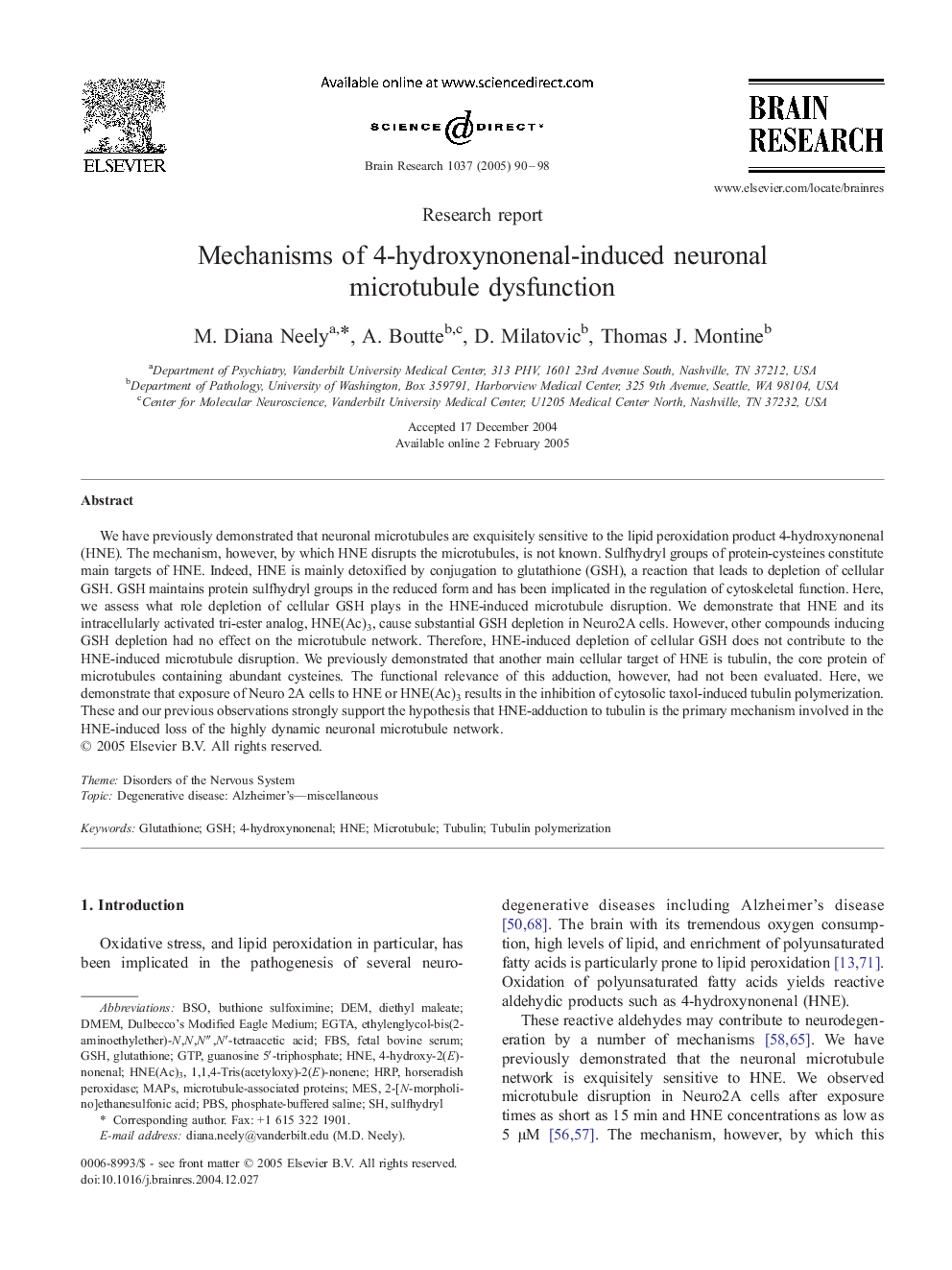| Article ID | Journal | Published Year | Pages | File Type |
|---|---|---|---|---|
| 9416642 | Brain Research | 2005 | 9 Pages |
Abstract
We have previously demonstrated that neuronal microtubules are exquisitely sensitive to the lipid peroxidation product 4-hydroxynonenal (HNE). The mechanism, however, by which HNE disrupts the microtubules, is not known. Sulfhydryl groups of protein-cysteines constitute main targets of HNE. Indeed, HNE is mainly detoxified by conjugation to glutathione (GSH), a reaction that leads to depletion of cellular GSH. GSH maintains protein sulfhydryl groups in the reduced form and has been implicated in the regulation of cytoskeletal function. Here, we assess what role depletion of cellular GSH plays in the HNE-induced microtubule disruption. We demonstrate that HNE and its intracellularly activated tri-ester analog, HNE(Ac)3, cause substantial GSH depletion in Neuro2A cells. However, other compounds inducing GSH depletion had no effect on the microtubule network. Therefore, HNE-induced depletion of cellular GSH does not contribute to the HNE-induced microtubule disruption. We previously demonstrated that another main cellular target of HNE is tubulin, the core protein of microtubules containing abundant cysteines. The functional relevance of this adduction, however, had not been evaluated. Here, we demonstrate that exposure of Neuro 2A cells to HNE or HNE(Ac)3 results in the inhibition of cytosolic taxol-induced tubulin polymerization. These and our previous observations strongly support the hypothesis that HNE-adduction to tubulin is the primary mechanism involved in the HNE-induced loss of the highly dynamic neuronal microtubule network.
Keywords
PBSDMEMFBS4-hydroxynonenalGTP4-hydroxy-2(E)-nonenalEGTADemGSHHRPBSOHNE2-[N-morpholino]ethanesulfonic acidDulbecco's modified Eagle MediumDisorders of the nervous systemDegenerative disease: Alzheimer's—miscellaneoustubulindiethyl maleateMicrotubulefetal bovine serumsulfhydrylPhosphate-buffered salineMeSMapsHorseradish peroxidasemicrotubule-associated proteinsTubulin polymerizationGlutathioneguanosine 5′-triphosphate
Related Topics
Life Sciences
Neuroscience
Neuroscience (General)
Authors
M. Diana Neely, A. Boutte, D. Milatovic, Thomas J. Montine,
